
A high school teacher helps his students challenge their own racist beliefs.
- Subject:
- Arts and Humanities
- Material Type:
- Reading
- Provider:
- Southern Poverty Law Center
- Provider Set:
- Learning for Justice
- Date Added:
- 02/20/2013

A high school teacher helps his students challenge their own racist beliefs.
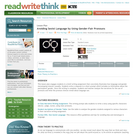
Students engage in a brief writing assignment that concretely illustrates how language and gender stereotyping interact causally.

Lesson outcomesSWBAT: demonstrate characteristics of good citizenship. AssessmentMonthly questionnaires and evidenceFinal presentation and project showcaseState Standards, Indicator, ObjectiveDescribe the responsibilities of being an effective citizen, such as cleaning up your neighborhood, being informed, obeying rules and laws, participating I class decisions, and volunteering (3.1.0.1a)Describe rights and responsibilities of being a citizen in Maryland (4.1.0.1)Describe individual rights and responsibilities in the United States (5.1.01)Examine the rights and responsibilities of being a citizen in the world (7.1.0.1)
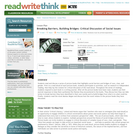
Through a series of picture book read-alouds, students engage in critical discussion of complex issues of race, class, and gender.
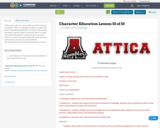
8 Character traits are a part of this unit. Each lesson is 30 minutes. There is a Google document on each trait that can be delivered directly to students. The student document contains items to read and videos to watch. The student document could be shown to an entire class or it could be viewed individually. Each character trait also has a teacher document titled as Discussion/Activity for use the following day in class.
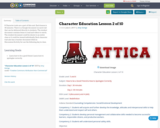
8 Character traits are a part of this unit. Each lesson is 30 minutes. There is a Google document on each trait that can be delivered directly to students. The student document contains items to read and videos to watch. The student document could be shown to an entire class or it could be viewed individually. Each character trait also has a teacher document titled as Discussion/Activity for use the following day in class.
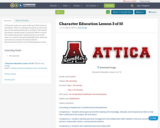
8 Character traits are a part of this unit. Each lesson is 30 minutes. There is a Google document on each trait that can be delivered directly to students. The student document contains items to read and videos to watch. The student document could be shown to an entire class or it could be viewed individually. Each character trait also has a teacher document titled as Discussion/Activity for use the following day in class.
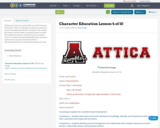
8 Character traits are a part of this unit. Each lesson is 30 minutes. There is a Google document on each trait that can be delivered directly to students. The student document contains items to read and videos to watch. The student document could be shown to an entire class or it could be viewed individually. Each character trait also has a teacher document titled as Discussion/Activity for use the following day in class.
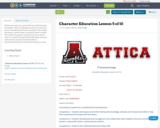
8 Character traits are a part of this unit. Each lesson is 30 minutes. There is a Google document on each trait that can be delivered directly to students. The student document contains items to read and videos to watch. The student document could be shown to an entire class or it could be viewed individually. Each character trait also has a teacher document titled as Discussion/Activity for use the following day in class.
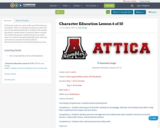
8 Character traits are a part of this unit. Each lesson is 30 minutes. There is a Google document on each trait that can be delivered directly to students. The student document contains items to read and videos to watch. The student document could be shown to an entire class or it could be viewed individually. Each character trait also has a teacher document titled as Discussion/Activity for use the following day in class.
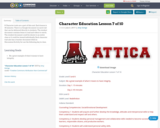
8 Character traits are a part of this unit. Each lesson is 30 minutes. There is a Google document on each trait that can be delivered directly to students. The student document contains items to read and videos to watch. The student document could be shown to an entire class or it could be viewed individually. Each character trait also has a teacher document titled as Discussion/Activity for use the following day in class.
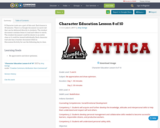
8 Character traits are a part of this unit. Each lesson is 30 minutes. There is a Google document on each trait that can be delivered directly to students. The student document contains items to read and videos to watch. The student document could be shown to an entire class or it could be viewed individually. Each character trait also has a teacher document titled as Discussion/Activity for use the following day in class.
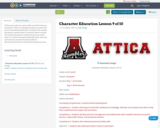
8 Character traits are a part of this unit. Each lesson is 30 minutes. There is a Google document on each trait that can be delivered directly to students. The student document contains items to read and videos to watch. The student document could be shown to an entire class or it could be viewed individually. Each character trait also has a teacher document titled as Discussion/Activity for use the following day in class.
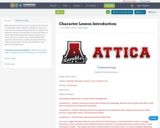
Eight character traits are a part of this unit. Each lesson is a 30 minute lesson. There is a Google document on each trait that can be delivered directly to students. The student document contains items to read and videos to watch. The student document could be shown to an entire class or it could be viewed individually. Each character trait also has a teacher document titled as a “Discussion/Activity” for the same 30 minute class period the following day.
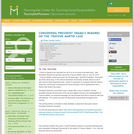
This activity aims to facilitate classroom discussion of President Obama's remarks on July 19 about race and the Trayvon Martin case.
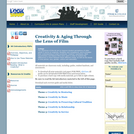
The objectives of this kit are to improve student perceptions of older adults in terms of creativity, flexibility and competence, and to broaden their understanding of what constitutes "creative" expression. Both documentary and feature films were used in order to explore the differences in intent between these different media, as well as the issues of time period, race, gender, culture and nationality.
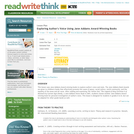
History has many faces in this lesson in which students read Jane Addams Award-winning books to learn about peace, social justice, world community, and equality.
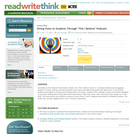
Students write and record their own essays for a class blog by first completing a series of activities designed to get them thinking and writing about their experiences.
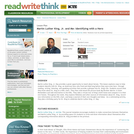
This lesson provides ideas for celebrating Martin Luther King, Jr. Day by encouraging students to explore the connections between Dr. King and themselves through journaling and inquiry-based research.
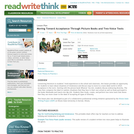
Students read and discuss literature about intolerance and diversity. They work with a partner to write two-voice poems that illustrate situations of intolerance at their school and suggest a step toward acceptance.